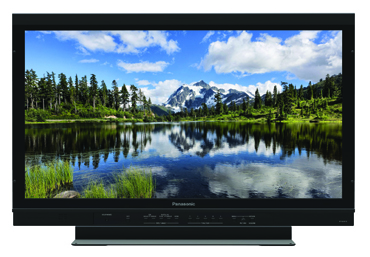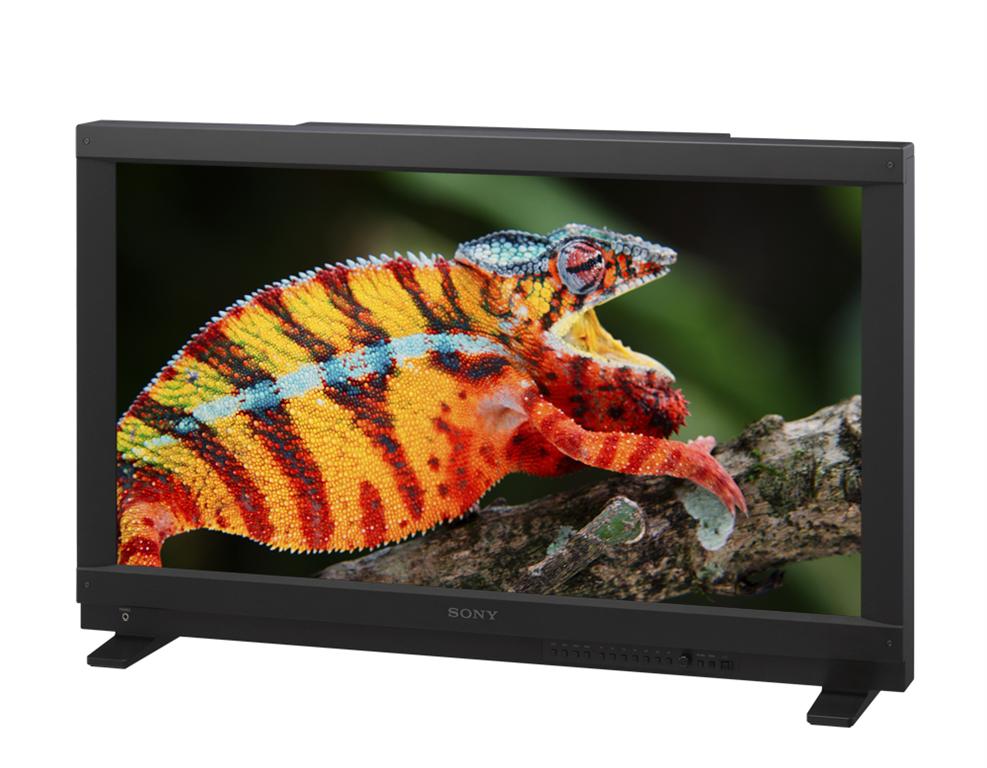4K Monitors Starting to Come Into Focus

The Panasonic BT-4LH301 4K LCD display is ruggedized for field use.
ALEXANDRIA, VA.—4K monitors are coming and, when they get here, they will be great. However, a range of videographers contacted for this article say they have yet to use a 4K field monitor on a shoot, despite having worked on many 4K shoots.
That doesn’t mean there’s no place for 4K field monitors on a shoot—just that, as of the time this article was written, 4K monitors are scarce in the ranks of working videographers. Fortunately, there are some workarounds to examine 4K video using more commonly available monitors.
“I shoot 4K a lot, but 4K as a monitoring solution is relatively new,” said Nate Clapp, a freelance director of photography working in the Washington, D.C. area. “Most 4K cameras output 1080 to feed conventional HD monitors, and that is what I use. In fact, it’s my understanding that the RED cameras I use do not have the ability to send out a 4K signal to a 4K-capable monitor.”
There’s some logic to working like this, particularly until 4K catches on as a distribution format.
“Most people are happy to capture 4K but monitor in HD, since HD is probably the deliverable,” Clapp said. “4K monitors are still a bit rare and expensive, especially for field use.”
Since it’s nearly a blank slate with regard to 4K field monitors, one well-known videographer wanted to share his wish list with the industry in the hopes that what he wants will get into the final products.
Get the TV Tech Newsletter
The professional video industry's #1 source for news, trends and product and tech information. Sign up below.
“I believe there needs to be two types of field monitoring devices, depending on the type of production and the budget,” said Randall Dark, director for DARKmania Productions in Austin, Texas.
Dark would prefer to have what he calls “The Geek Monitor,” with all the bells and whistles such as built-in waveform/vectorscope, audio levels and controls to allow his team to critically analyze the output of the camera.
“I would love the luxury of critical analysis, but many of my productions are run-and-gun and I don’t have the time or personnel resources,” Dark said. “In that case, I want my monitor to be small, rugged, portable and idiot proof.”

The Sony PVM-X300 is a 30-inch LCD monitor that uses in-plane switching (IPS) technology to allow for a wide viewing angle.
Dark sees room for two types of monitors to serve the production community, and they should be priced accordingly.
“Buying a monitor just to monitor should be cost-effective,” he said. “Buying a monitor that allows analysis of the images obviously will be more expensive and in line with existing price points, but allowing for the 4K price bump.”
MONITORS SHIPPING
A number of manufacturers are now shipping 4K monitors suitable for field or studio use, and more will be coming soon. Companies with products already shipping include Sony, Astro Design, JVC, Sharp, Eizo, Planar and TV Logic. Panasonic plans to introduce a professional 4K field monitor soon and more monitors from a variety of manufacturers are on the way.
The Sony PVM-X300 is a 30-inch LCD monitor that uses in-plane switching (IPS) technology to allow for a wide viewing angle. The X300 features 4096 x 2160-pixel resolution, quad 3G/HDSDI inputs, HDMI 1.4 for single 4K connection and quad 1.3 HDMI for other systems. Sony has a software upgrade in the works that will let the X300 input 4K through twin Displayport inputs for computer connections.
Gary Mandle, senior product manager for Sony Electronics, said that more technology choices will be available for 4K monitors soon.
“IPS LCD is the only technology that really fits right now,” he said. “But soon we will have an OLED offering that will provide all the benefits of OLED and let you see a true 4K image.”
With 4K monitors undergoing rapid evolution that includes display technology and connection standards, Mandle advises that you should always keep your eye on the screen.
“The most critical characteristic of a monitor is its ability to accurately show an image,” he said. “Input flexibility is also important, so you can connect to anything that can feed the monitor, and a rugged design is a must so that it can withstand the rigors of field production.”
Late last year, Sharp introduced a 4K LCD monitor that uses indium gallium zinc oxide (IZGO) technology. The early word on IGZO LCD displays is that it can achieve higher pixel density compared to other technologies, and it has faster response times. The monitor Sharp introduced is the PN-K321, a 32-inch professional desktop/workstation display with native resolution of 3840 x 2160 pixels.
JVC has the PS-840UD, an 84-inch 4K display for professional applications. That size is a little large for field use, although it is an excellent size for a studio audience monitor. With JVC being a pioneer in affordable 4K cameras, the company knows something about what it takes to successfully monitor 4K video.
“First and foremost, input connections must match the recorder, computer or camera to which the monitor is connected— and the signals must be compatible,” said Dave Walton, assistant vice president for marketing and communications at JVC Professional Products. “That’s an ongoing problem, because there are various flavors of 4K [4096 x 2160 and 3840 x 2160],” Walton added. “A downscaled signal that works with any HD monitor may be provided, but then we’re not talking about 4K monitors anymore.”
Walton said that JVC’s GY-HMQ10 camcorder provides a 60p signal at 3840 x 2160-pixels via four HDMI cables, so it can plug directly into a 4K monitor with these inputs. Using four signals, one for each quadrant of the picture, has been commonplace on 4K display devices.
DIGITAL CINEMA INITIATIVES
TV Logic recently debuted the LUM- 300W, a 30-inch 4K display with resolution of 4096 x 2160-pixels. The LUM-300W is one of the first displays that meets the Digital Cinema Initiatives standard, and is expected to be suitable for color grading. Its high-output LED backlight should provide brightness levels well-suited for field work. The LUM-300W should ship by the end of 2013.
Panasonic targeted its new BT-4LH310 4K monitor at field applications. The unit is a 31-inch 4096 x 2160-pixel LCD display with ruggedized construction that meets Panasonic’s “production tough” designation.
“The BT-4LH310 was designed for field use, including use in a video village for live viewing of 4K cameras, as well as for viewing of dailies,” said Steve Cooperman, product manager for P2 HD and production displays at Panasonic System Communications.
The BT-4LH310, which should be shipping in the next few weeks, is suitable for color grading and quality control.
“It has six-pole color correction that includes a look-up table for each signal level, and applies 10-bit image processing to each RGB color to balance the six coordinate axes of the three primary colors [RGB] and their complementary colors [CMY],” Cooperman said. “The 4LH310 supports the DCI-P3 color space (defined by more than a 96-percent cover area), and can also accurately display industry-standard color space of ITU-R BT.709.”
Today, 4K field monitoring primarily uses HD (1920 x 1080-pixel) displays, but it’s clear that is rapidly changing. During this time when standards are being established and workflows ironed out, it’s wise to keep an eye on the connection standards used by your camera and the monitor you are considering using. Also important is the resolution you will be using, as 4K can be defined as both 3840 x 2160-pixels and 4096 x 2160-pixels.
With downward pressure on the cost of 4K cameras, there is a growing market for 4K monitors. Looks like help from the monitor manufacturers is on the way.
Bob Kovacs is the former Technology Editor for TV Tech and editor of Government Video. He is a long-time video engineer and writer, who now works as a video producer for a government agency. In 2020, Kovacs won several awards as the editor and co-producer of the short film "Rendezvous."

